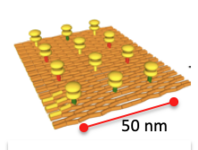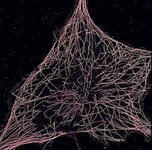Constructing functionalized self-assembled DNA and RNA nanostructures capable of complex biosensing, coupled with controlled action, e.g. drug release, enzyme activation, and receptor signaling. We also use DNA origamis to create specific patterns of proteins or sugars on a surface to assay multivalency and pattern recognition in biomolecular interactions. Via the Centre for Cellular Signal Patterns (CellPAT), supported by the Danish National Research Foundation, we investigate how multivalent interactions and avidity govern recognition and cell-cell communication in immunology and stem cells. As part of this project, we have recently established the super resolution microscopy technique DNA-PAINT in the lab.



Understanding the biogenesis and function of small non-coding RNAs and circular RNAs. In particular, we're interested in how circRNAs are formed in the cell and how they function in development and disease. We use cell culture, organoids and mouse models to study the role for circRNAs in neuronal development and in the pathology of human brain disease. This work is done in close collaboration with the labs of Thomas Birkballe Hansen (ncRNA-lab at MBG) and Lasse Sommer Kristensen (Biomedicine). We also investigate the potential for tRNA fragments and circRNAs to act as biomarkers and possible targets for disease intervention in human neurodegenerative disease (such as Alzheimer's and Parkinson's disease).
The creation of novel bioimaging and delivery systems for gene medicine including small RNAs, nanobodies and Cas9 with a specific focus on inflammation, cancer, influenza, and tissue regeneration. These systems are based on nanoparticles and nucleic acid scaffolds such as a four-armed Holliday junction designed to deliver multiple copies of a given effector molecule (e.g., a surface-bound receptor). Part of this work is carried out in the context of the Center for Multifunctional Biomolecular Drug Design (CEMBID) supported by the Novo Nordisk Foundation.
Next-generation sequencing for RNA profiling (from cell culture, animal models and human patients)
Single-cell sequencing (collaboration with Biomedicine)
Long-read sequencing using Oxford Nanopore technology
RNA bioinformatics
Fluorescence microscopy and flow analysis
TIRF and super-resolution microscopy (DNA-PAINT)
3D in vivo optical imaging
Targeted delivery using antibody, nanobody, aptamer technology
Aptamer selection
DNA and RNA origami (scaffold for delivery, positioning and controlled cell activation)
Protein-ligand interactions
Conjugation chemistry (e.g. Click Chemistry)
